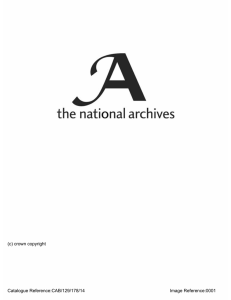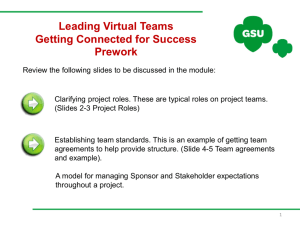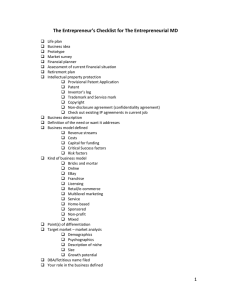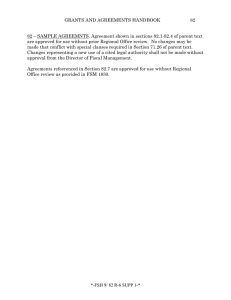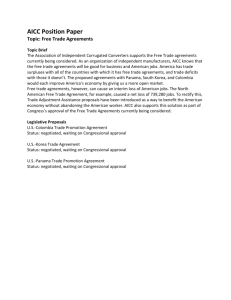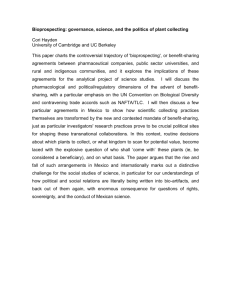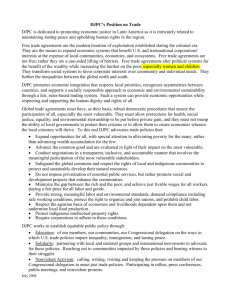Developing Our Working Agreements Lesson Plan
advertisement
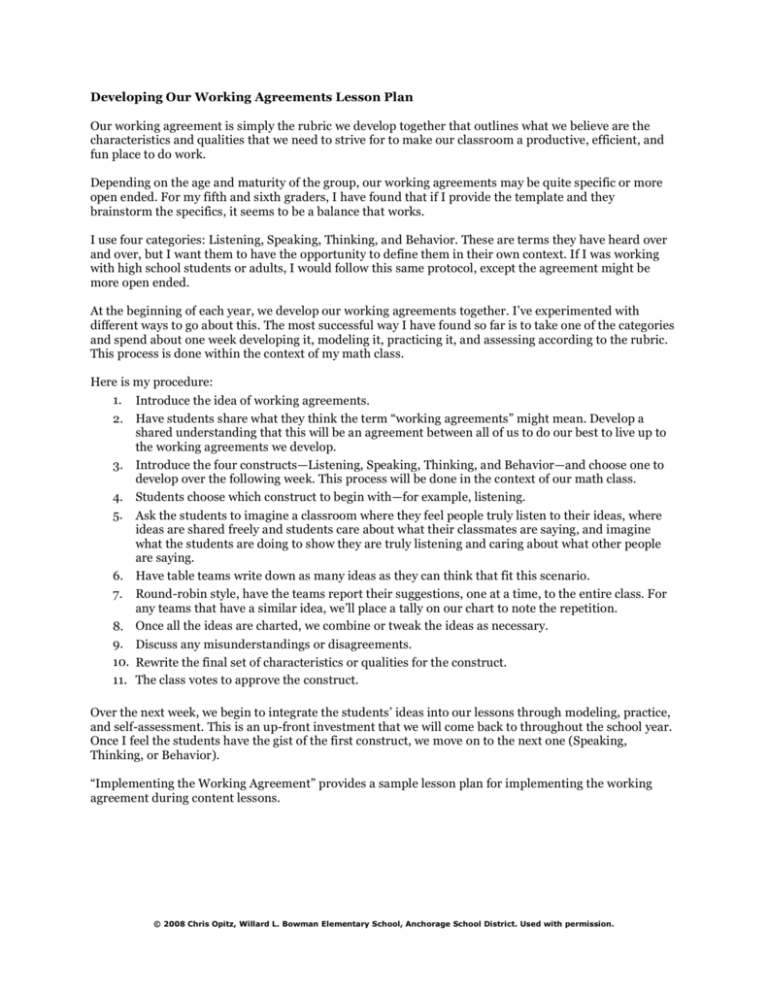
Developing Our Working Agreements Lesson Plan Our working agreement is simply the rubric we develop together that outlines what we believe are the characteristics and qualities that we need to strive for to make our classroom a productive, efficient, and fun place to do work. Depending on the age and maturity of the group, our working agreements may be quite specific or more open ended. For my fifth and sixth graders, I have found that if I provide the template and they brainstorm the specifics, it seems to be a balance that works. I use four categories: Listening, Speaking, Thinking, and Behavior. These are terms they have heard over and over, but I want them to have the opportunity to define them in their own context. If I was working with high school students or adults, I would follow this same protocol, except the agreement might be more open ended. At the beginning of each year, we develop our working agreements together. I’ve experimented with different ways to go about this. The most successful way I have found so far is to take one of the categories and spend about one week developing it, modeling it, practicing it, and assessing according to the rubric. This process is done within the context of my math class. Here is my procedure: 1. Introduce the idea of working agreements. 2. Have students share what they think the term “working agreements” might mean. Develop a shared understanding that this will be an agreement between all of us to do our best to live up to the working agreements we develop. 3. Introduce the four constructs—Listening, Speaking, Thinking, and Behavior—and choose one to develop over the following week. This process will be done in the context of our math class. 4. Students choose which construct to begin with—for example, listening. 5. Ask the students to imagine a classroom where they feel people truly listen to their ideas, where ideas are shared freely and students care about what their classmates are saying, and imagine what the students are doing to show they are truly listening and caring about what other people are saying. 6. Have table teams write down as many ideas as they can think that fit this scenario. 7. Round-robin style, have the teams report their suggestions, one at a time, to the entire class. For any teams that have a similar idea, we’ll place a tally on our chart to note the repetition. 8. Once all the ideas are charted, we combine or tweak the ideas as necessary. 9. Discuss any misunderstandings or disagreements. 10. Rewrite the final set of characteristics or qualities for the construct. 11. The class votes to approve the construct. Over the next week, we begin to integrate the students’ ideas into our lessons through modeling, practice, and self-assessment. This is an up-front investment that we will come back to throughout the school year. Once I feel the students have the gist of the first construct, we move on to the next one (Speaking, Thinking, or Behavior). “Implementing the Working Agreement” provides a sample lesson plan for implementing the working agreement during content lessons. © 2008 Chris Opitz, Willard L. Bowman Elementary School, Anchorage School District. Used with permission.

